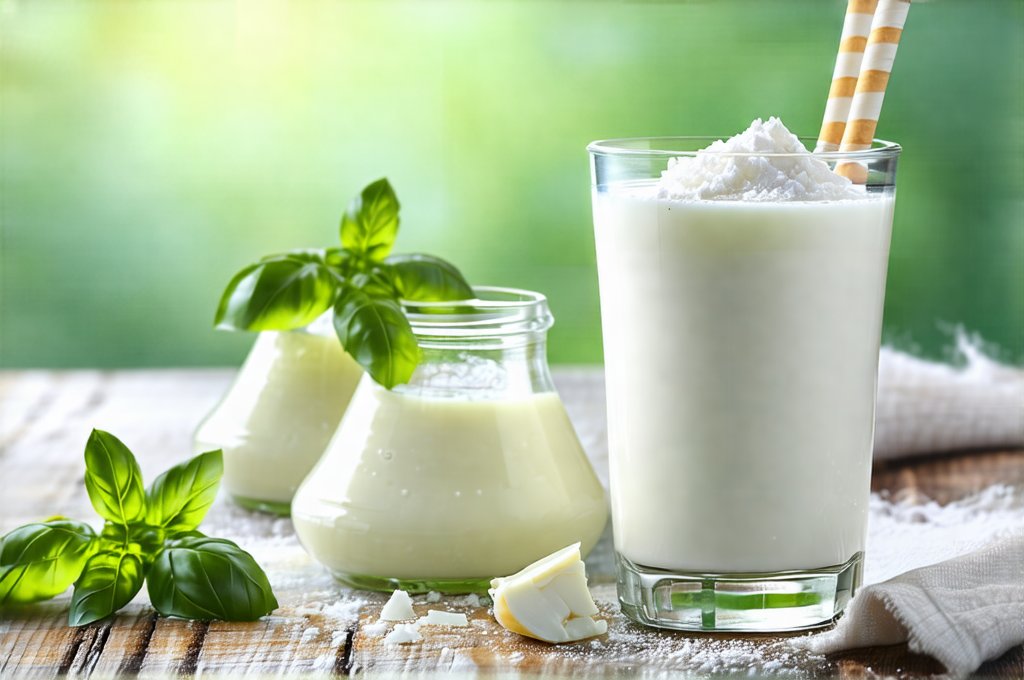Lactose intolerance, a surprisingly common digestive issue, affects millions worldwide. Often misunderstood as an allergy, it’s actually a consequence of insufficient lactase, the enzyme responsible for breaking down lactose – the sugar found in milk and dairy products. This deficiency leads to uncomfortable symptoms like bloating, gas, diarrhea, and abdominal pain after consuming dairy. However, the relationship between dairy consumption and digestive discomfort isn’t always straightforward. Many individuals with diagnosed lactose intolerance can tolerate certain dairy products, particularly fermented ones, sparking curiosity about why this is the case and how our guts adapt over time. Understanding these nuances requires a deeper dive into the science of fermentation, enzymatic activity, and the dynamic ecosystem that is the human gut microbiome.
The key lies in recognizing that lactose intolerance isn’t an all-or-nothing phenomenon. It exists on a spectrum, with varying degrees of lactase deficiency leading to different levels of sensitivity. Furthermore, our digestive systems are remarkably adaptable; consistent exposure to small amounts of lactose can actually stimulate lactase production and foster the growth of lactose-utilizing bacteria in the gut, potentially increasing tolerance over time. This adaptation is significantly influenced by factors like genetics, age, ethnicity, and importantly, the type of dairy consumed. Fermented dairy products, such as yogurt, kefir, and aged cheeses, often present a different experience for individuals with lactose intolerance compared to fresh milk, largely due to their altered composition resulting from the fermentation process itself.
The Science Behind Fermentation & Lactose Reduction
Fermentation is an ancient food preservation technique that relies on the activity of microorganisms – primarily bacteria and yeasts – to transform food substances. In the context of dairy, specific bacterial cultures are added to milk, initiating a process where lactose is broken down into simpler sugars: glucose and galactose. This breakdown serves several purposes. Firstly, it significantly reduces the overall lactose content, making the final product easier to digest for those with limited lactase production. Secondly, fermentation creates byproducts like lactic acid, which contribute to the characteristic tangy flavor of fermented dairy and also enhance its preservation qualities. Thirdly, beneficial bacteria are introduced into the food, potentially contributing to a healthier gut microbiome when consumed.
The degree of lactose reduction varies depending on the type of fermented dairy product and the specific bacterial cultures used during fermentation. Yogurt, for example, typically contains less lactose than milk because Lactobacillus bulgaricus and Streptococcus thermophilus, common yogurt cultures, are efficient at breaking down lactose. Kefir, a fermented milk drink, often has even lower levels due to its wider range of probiotic microorganisms. Aged cheeses undergo further lactose reduction during the aging process as bacteria continue to metabolize lactose over time. In contrast, fresh, unfermented dairy products like whole milk retain their full lactose content, making them more likely to trigger symptoms in individuals with significant lactose intolerance.
Furthermore, the fermentation process alters the physical structure of milk proteins, making them easier to digest and reducing the likelihood of allergic reactions or sensitivities. This pre-digestion by microbial enzymes essentially does some of the work for our own digestive system, lessening the burden on lactase and other digestive enzymes. This explains why many people who struggle with fresh milk can comfortably consume fermented dairy products. It’s not simply about less lactose; it’s about a fundamentally different composition that is gentler on the digestive system. Understanding how irregular eating habits impact digestion can also help manage sensitivity.
Gut Microbiome & Lactose Tolerance Adaptation
The gut microbiome – the vast community of microorganisms residing in our digestive tract – plays a pivotal role in lactose tolerance and adaptation. A healthy, diverse gut microbiome can actively assist with lactose digestion in several ways. Some bacteria naturally possess β-galactosidase enzymes, capable of breaking down lactose within the gut itself. This essentially provides an extra layer of lactose digestion beyond what our own bodies are able to do. The abundance and activity of these lactose-utilizing bacteria directly impact our ability to tolerate dairy.
Individuals with chronic low lactase production can gradually increase their tolerance through a process called microbial adaptation. By consistently consuming small amounts of lactose (even from fermented sources), we encourage the growth of these beneficial, lactose-digesting bacteria. This isn’t an immediate fix; it requires consistent exposure and takes time for the microbiome to shift its composition. Think of it like training a muscle – the more you use it, the stronger it becomes. Over time, this microbial activity can significantly reduce symptoms and allow individuals to enjoy dairy without discomfort. Considering gut hormones during adaptation is also helpful.
- Ordered steps for improving gut adaptation:
- Start with very small portions of fermented dairy (e.g., 2 tablespoons of yogurt).
- Observe your body’s response and gradually increase the amount over several weeks.
- Consistency is key – regular, small exposures are more effective than infrequent large doses.
- Prioritize diverse probiotic-rich foods alongside fermented dairy to support a healthy gut microbiome.
Factors Influencing Lactose Tolerance & Fermented Dairy Consumption
Lactose intolerance isn’t solely determined by lactase deficiency; several other factors influence how we experience lactose and respond to different dairy products. Genetics play a significant role, with some ethnicities having a higher prevalence of lactase non-persistence (the natural decline in lactase production after infancy). Age is another factor; lactase activity typically decreases with age, making older adults more prone to experiencing symptoms. Dietary habits also matter – a diet rich in calcium and vitamin D can support lactase production.
The form of dairy consumed significantly impacts tolerance. As discussed earlier, fermented dairy products generally pose less of a challenge due to reduced lactose content and altered protein structure. However, even within the category of fermented dairy, variations exist. For example, hard cheeses like cheddar or parmesan have very little lactose because of their long aging process. Conversely, some yogurts may contain added sugars that can exacerbate digestive issues for certain individuals.
Furthermore, individual gut microbiome composition differs dramatically from person to person. This means what works well for one individual might not work for another. Some people naturally have a higher abundance of lactose-digesting bacteria, making them more tolerant even without deliberate adaptation efforts. Others may require a more gradual and prolonged approach to increase their tolerance. Ultimately, understanding your own body’s response is crucial. Keeping a food diary and tracking symptoms can help identify trigger foods and determine the optimal amount of fermented dairy you can comfortably consume. Being mindful of cold beverages and their effects on gut function could also be beneficial.
Beyond Lactose: The Broader Benefits Of Fermented Dairy
While lactose reduction is the primary reason why many individuals with intolerance can enjoy fermented dairy, these products offer broader health benefits related to gut health and overall well-being. Probiotics – the live microorganisms found in fermented foods – play a vital role in maintaining a balanced gut microbiome, which is increasingly recognized as essential for immune function, nutrient absorption, and mental health.
Fermented dairy provides a natural source of probiotics, contributing to the diversity and abundance of beneficial bacteria in the gut. These probiotics can help: – Improve digestion and reduce bloating. – Strengthen the immune system by modulating gut immunity. – Enhance nutrient absorption, particularly calcium and vitamin D. – Potentially improve mental health through the gut-brain axis.
However, it’s important to note that probiotic strains vary significantly in their effects. Different fermented dairy products contain different types of probiotics, each with unique properties. Therefore, consuming a variety of fermented foods is recommended to maximize the benefits and support a diverse microbiome. Moreover, the survival of probiotics through the digestive tract can be influenced by factors like stomach acid levels and intestinal transit time. Choosing high-quality fermented dairy products with live and active cultures is essential. Look for labels that specify the number of colony forming units (CFUs) per serving to ensure you’re getting a substantial dose of beneficial bacteria. Additionally, understanding the effects of antibiotics on gut health can help restore balance after treatment.


















